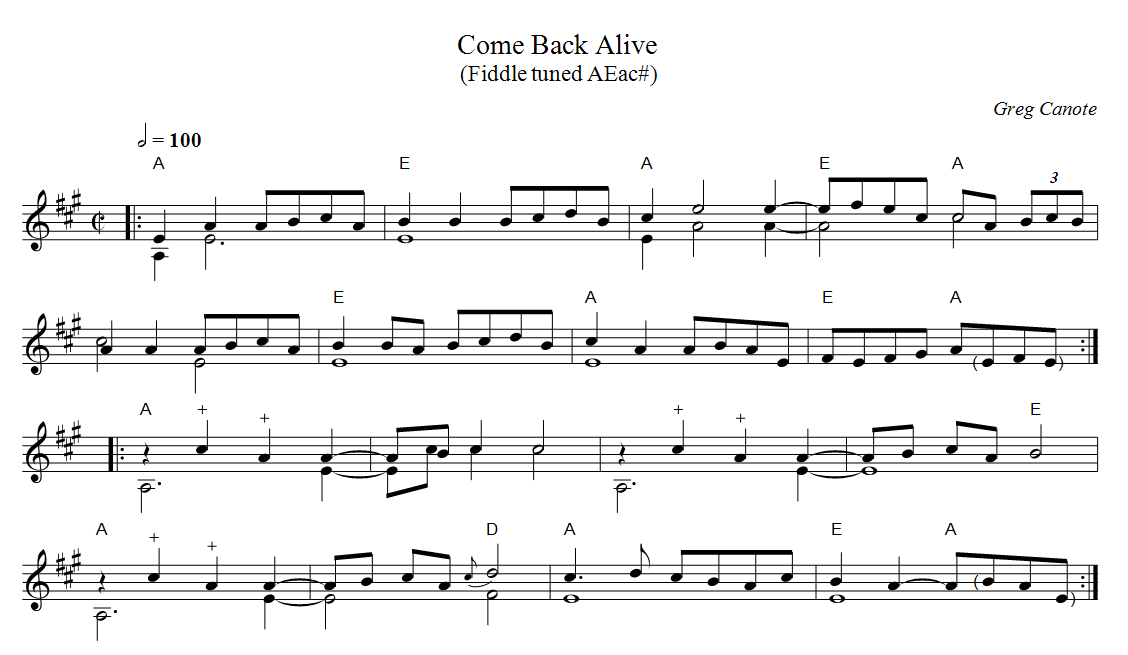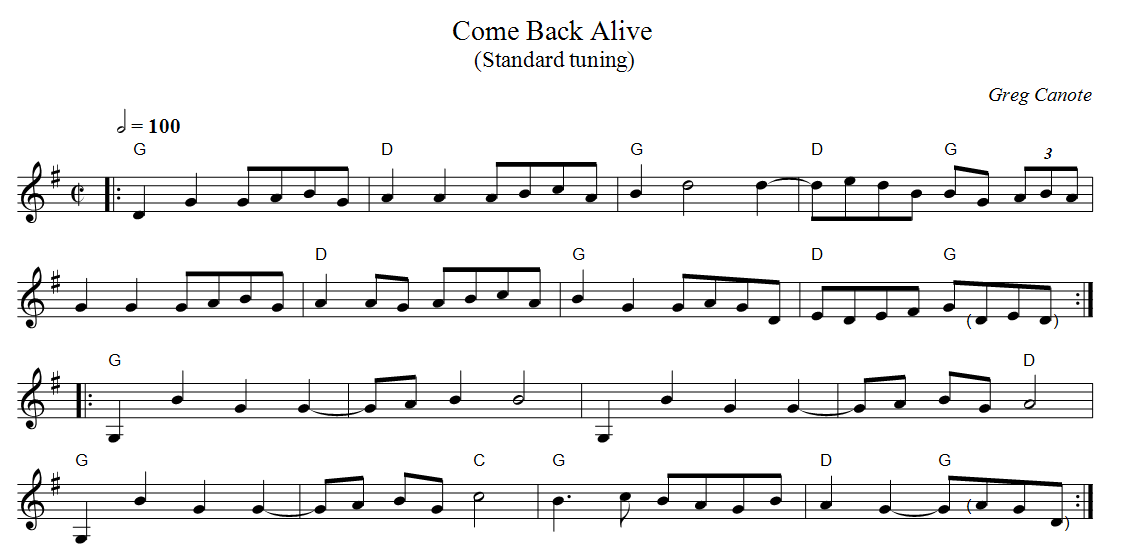I grew up listening to the Canote brothers, Greg and Jere, on the radio as the core of the house band for Sandy Bradley’s Potluck, a weekly radio variety show similar to A Prairie Home Companion with a more local flavor. When people talk about a pacific northwest style of fiddling or old-time music, I know that a lot of them mean the historical styles that Vivian and Phil Williams researched and played, but for me it will always be the Canotes.
This month’s tune is a composition of Greg’s, and while it is possible to play a version of it in standard tuning in the key of G, this is meant to be played in the key of A in “Calico” tuning, with the two low strings tuned up a whole step to A and E and the high string tuned down two and a half steps to C#. Calico tuning has a very distinctive sound, and if you’ve never tried re-tuning your instrument and playing in it, you’re really missing out. I can’t describe it any better than the liner notes for the Canotes’ album “Calico Pie” do:
You know it when you hear it–that characteristic ringing “Calico” sound: the insistent whine of the C# unison on the high strings, the left-hand pizzicato in endless combinations, the rhythmic sweep of the bow dipping down to the low strings. It’s an ‘open’ tuning in the full sense of the word–the notes make an arpeggiated chord like a bugle. You can play Reveille or Taps without laying a finger on a string!
The name of the tuning comes from the tune of the same name. We also like to think of a calico cat with three colors, analogous with the three notes of the chord.
Greg tells me that part of the reason he wrote this and other calico tunes was so there would be more to play in that tuning. Happily, there are many more fine calico tunes in circulation today than there were twenty years ago–I suspect in large part thanks to Greg and Jere playing and teaching them at camps and festivals–so get yourself over to Slippery-Hill (https://www.slippery-hill.com/taxonomy/fiddle-tuning/aeac) and see what else catches your fancy!
About this transcription: the notes with a “+” above them are meant to be plucked with the fingers of your left hand while playing the low drone with your bow. I find that the ring finger usually works best for me, but experiment to find what works for you. I’ve included which drone notes I think I’m playing when I play this tune, but in many cases the open string either above or below will work. Again, experiment to see what sounds good to you! And watch out for the one time in the middle of the last line where you do finger the drone string.
The title of this tune comes from a family story told about Jere’s wife Julie’s son from her first marriage: Her son loved fish, and when he was young and they went past the fish stall at Pike Place Market they would often get a bag of smelt. One night, Julie heard some splashing in the upstairs bathroom, went up, and found him in the tub with a smelt, swimming it around in the water, entreating it to “come back alive, come back alive!”
There was recently a documentary film made about the Canote brothers, and as of this writing you can watch it for free at https://thecanotetwins.com/.
If you’re not ready to try alternate tunings, here is a version in G in standard tuning. I really encourage you to try alternate tunings if you haven’t before, though — they open up all sorts of possibilities.
—Josh
Josh playing the tune in A in Calico tuning:
Josh playing the tune in G in standard tuning:
Benjamin Zorn plays Come Back Alive in Calico-G (GDGB):
Featured calico cat image by Waithamai, CC BY 4.0, via Wikimedia Commons
No sheet music files available for this piece.

